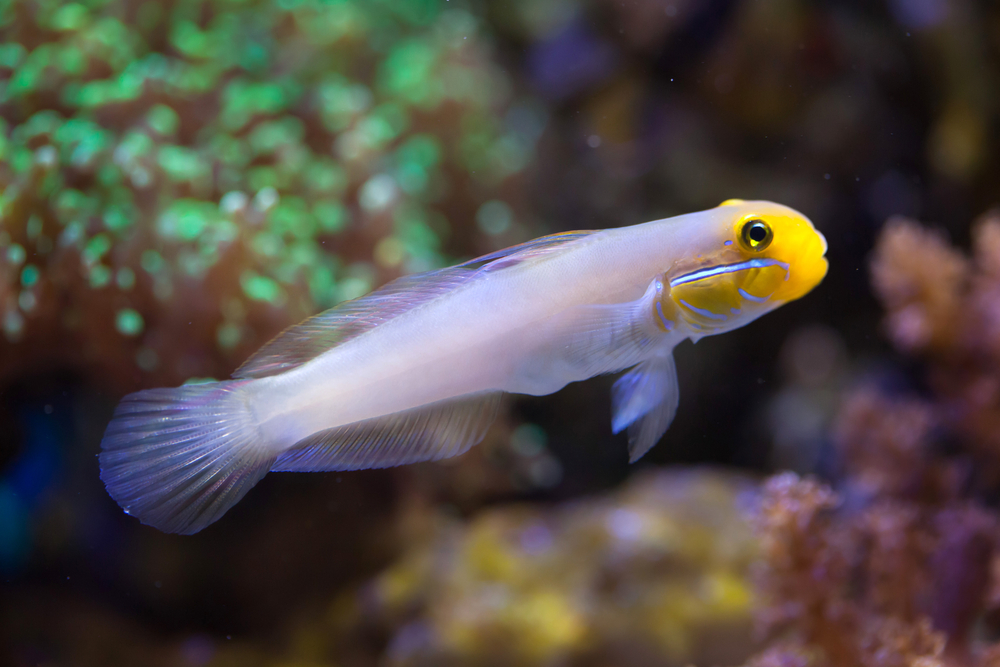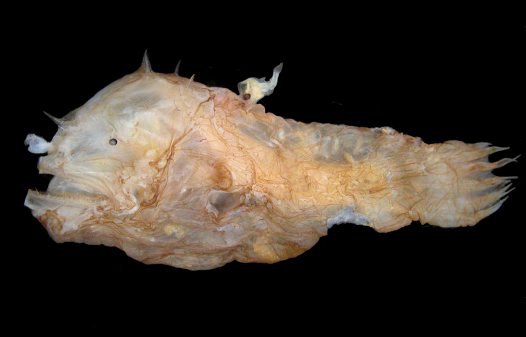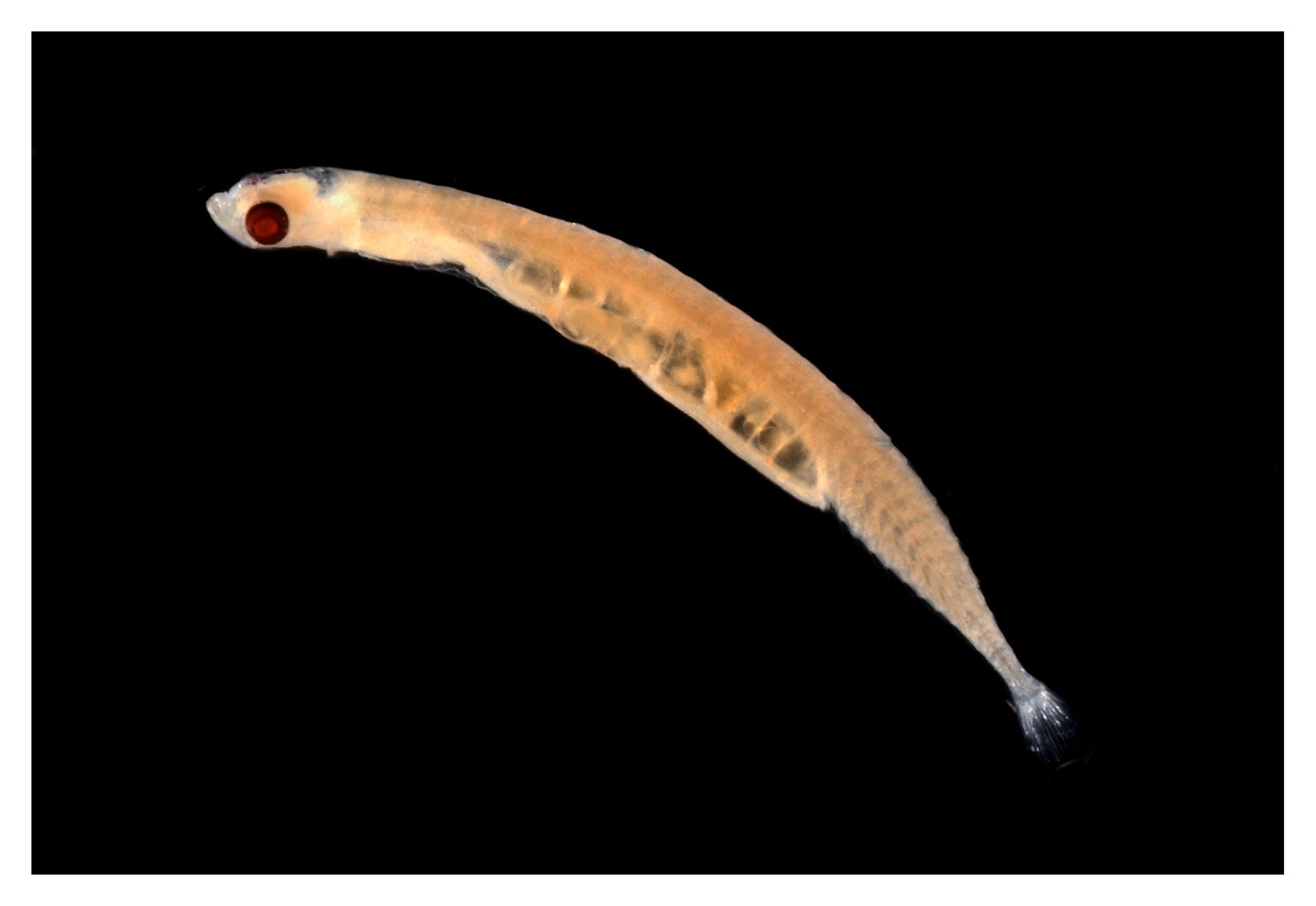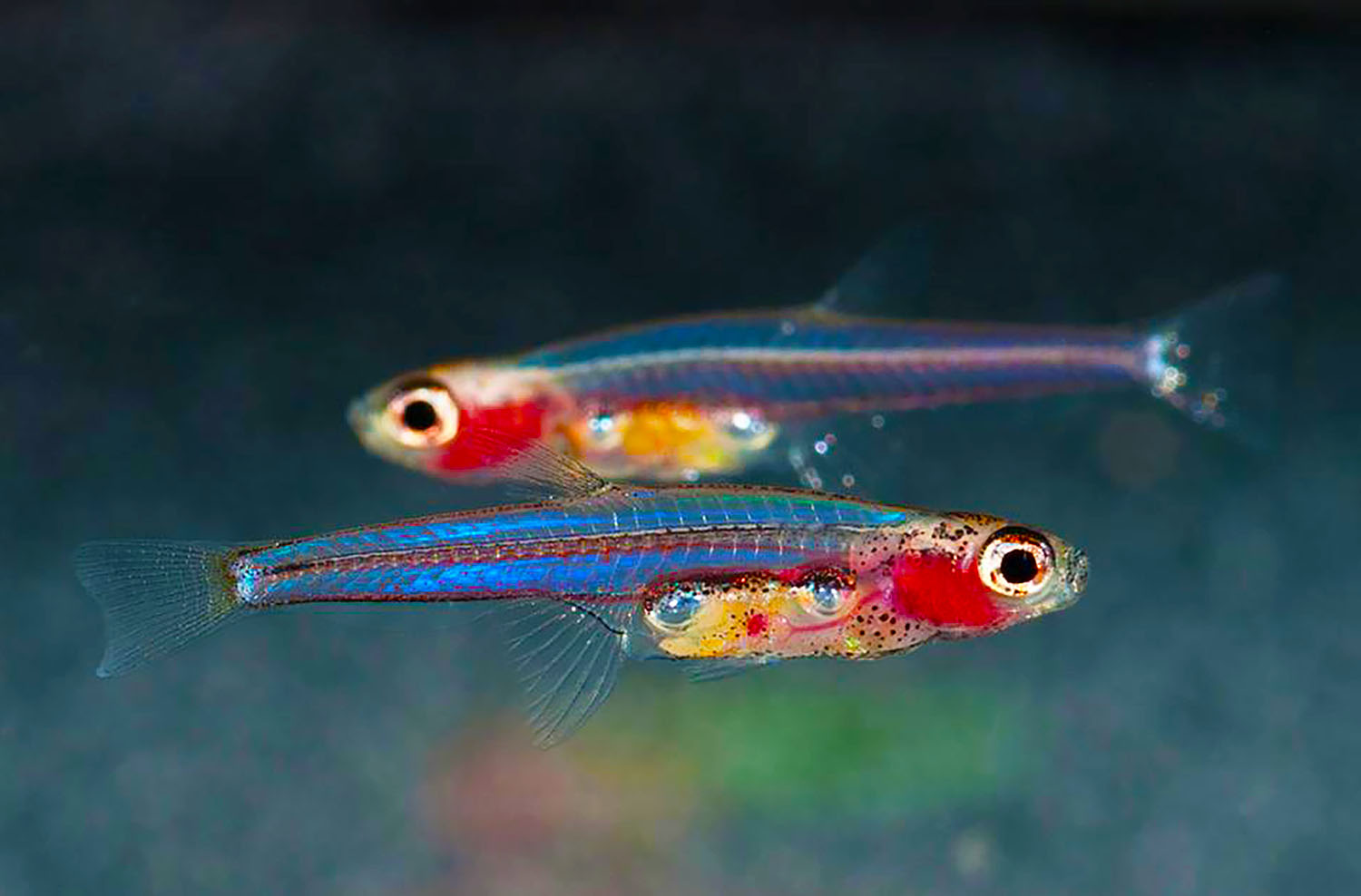If you’re curious about the smallest fish in the world, you’ve come to the right place. In this article, we will be discussing the top 8 smallest fish in the world. These tiny fish range in size from 6.2 mm to 25 mm in length and can be found in various parts of the world.
Some of these fish are popular aquarium pets, while others are only found in small springs in Greece. Despite their small size, these fish are fascinating creatures that have adapted to survive in their unique environments.
You are reading: The Top 8 Smallest Fish In The World
So, let’s dive in and explore the world of the smallest fish!

The Top 8 Smallest Fish In The World
Photocorynus Spiniceps

Photocorynus Spiniceps is a species of anglerfish in the family Linophrynidae. It is the smallest fish in the world and holds the record for the smallest known, sexually mature vertebrate. The males can reach a length of only 6.2 mm (0.24 in) and are attached to much larger females.
This deepwater anglerfish is found in both sides of the Pacific Ocean and in tropical and subtropical waters of the Western Atlantic.
Like most other deep-sea anglerfish, Photocorynus Spiniceps lures its prey into striking range using a bioluminescent sac at the end of an illicium, the highly modified first ray of the dorsal fin, and swallows the prey whole with the help of a distending jaw and a similarly distending stomach.
Stout Infantfish

The Stout Infantfish, also known as Schindleria brevipinguis, is a species of marine fish in the family Gobiidae of Perciformes. It is native to Australia’s Great Barrier Reef and Osprey Reef in the Coral Sea.
This pedomorphic species has a life span of only 2 months, has dispensed its fishy appendages such as teeth and scales, and has no pigment except in the eyes. Males of S. brevipinguis have an average standard length of 7.7 mm (0.30 in), a gravid female was 8.4 mm (0.33 in) and the maximum standard length of the species is 10 mm (0.39 in).
The Stout Infantfish differs from the other species of infantfishes by having a deeper body, fewer dorsal and anal fin rays, and larger eyes. The female Stout Infantfish is the largest example of the species.
Paedocypris Progenetica

Read more : 8 Types Of Water Snakes
Paedocypris Progenetica is a species of tiny cyprinid fish endemic to the Indonesian islands of Sumatra and Bintan, where it is found in peat swamps and blackwater streams.
It was discovered by Singaporean ichthyologist Heok Hui Tan, who also described another species of the same genus called Paedocypris Micromegethes. This fish has been claimed to be one of the smallest known species of fish in the world. The smallest mature female measured 7.9 mm (0.31 in).
Paedocypris is a genus of tiny cyprinid fish found in swamps and streams on the Southeast Asian islands of Borneo, Sumatra, and Bintan. Two species were discovered and identified by ichthyologists Maurice Kottelat and Tan Heok Hui, with the osteology studied by Ralf Britz at London’s Natural History Museum.
In 1994, the same ichthyologists had already discovered another miniature species of the same genus, Paedocypris Micromegethes, in Sarawak, the Malaysian part of Borneo.
Paedocypris Progenetica is distinguished from Paedocypris Micromegethes by its smaller maximum size, with males measuring 9.8 mm (0.39 in) and females measuring 10.3 mm (0.41 in), compared to the respective sizes of 11.6 mm (0.46 in) and 11.4 mm (0.45 in) for Paedocypris Micromegethes.
This species is known to live in shoals and is naturally found in vegetation, exhibiting an omnivorous diet.
Dwarf Pygmy Goby
The Dwarf Pygmy Goby, also known as Pandaka pygmaea, is a tropical species of fish in the subfamily Gobionellinae from brackish water and mangrove areas in Southeast Asia.
It is one of the smallest fish species in the world, with males reaching maturity at a standard length of 0.9 cm (0.35 in) and females at 1.5 cm (0.59 in) in total length. Adults weigh around 4 milligrams (0.00015 oz).
This species is nearly transparent and colorless, with a moderately elongated and robust body. Males are slender with nearly straight dorsal and ventral profiles, while the females appear stouter with the dorsal profile slightly curved and the belly protuberant.
The Dwarf Pygmy Goby is mostly found in mangroves and other brackish waters with muddy bottoms and plenty of aquatic plants. It has adapted to living in these environments and is known to frequent shady river banks.
This species is popular among aquarium enthusiasts and is usually sold in groups of 5 or 10.
Midget Dwarf Goby
The Midget Dwarf Goby, also known as Trimmatom nanus, is a species of small fish in the family Gobiidae. It is found in the Western Pacific Ocean, specifically in the waters around the Philippines, Indonesia, and Malaysia. This tiny fish has a maximum recorded length of 10 mm (0.39 in).
The Midget Dwarf Goby is known for its vibrant colors, with males displaying a bright red or orange body and females exhibiting a more subdued yellow or brown coloration. It is a benthic species, meaning it lives near the bottom of the water column, and is often found in coral reefs and rocky areas.
Read more : 10 Types Of Owls
The Midget Dwarf Goby is a peaceful and social fish, often seen in small groups or pairs. Due to its small size and specific habitat requirements, it is not commonly kept in home aquariums.
Chili Rasbora
Chili Rasbora, also known as Boraras brigittae or Mosquito Rasbora, is a species of ray-finned fish in the genus Boraras. They are native to the swamps of South West Borneo, Indonesia.
Here are some interesting facts and care tips about Chili Rasbora:
Anatomy and Appearance
– Chili Rasbora is one of the smallest tropical fish found in home aquariums, with a maximum length of 2 cm (0.79 in).
– They have a slim body with strongly pointed fins and a forked tail.
– Males are more colorful than females, with a bright red or orange body and a black spot at the base of the tail.
– Females are slightly larger and have a more subdued yellow or brown coloration.
Habitat and Tank Requirements
– Chili Rasbora is found in the rainforests of Borneo and Indonesia, where they live in acidic, softer waters with a pH range of 6.0–8.0, temperatures between 72–82°F (22–28°C), and soft to hard water.
– They are peaceful and social fish, often seen in small groups or pairs.
– Chili Rasbora is a great choice for a nano tank, as they only need a minimum tank size of 10 gallons.
– They prefer a planted aquarium with plenty of hiding places, such as driftwood and rocks.
Diet
– Chili Rasbora is an omnivorous species, feeding on small insects, crustaceans, and algae in the wild.
– In captivity, they can be fed a variety of foods, including high-quality flakes, pellets, frozen or live foods such as brine shrimp, daphnia, and bloodworms.
Tank Mates
– Chili Rasbora is a peaceful species that would do great with other similar-sized community fish that are not big enough to predate on them.
– Compatible tank mates include lambchop rasboras, rosy loaches, ember tetras, dwarf cory catfish, neon green rasboras, snails, and shrimp.
– They get along well with other peaceful nano fish like clown killifish.
Corfu Dwarf Goby
The Corfu Dwarf Goby, also known as Knipowitschia goerneri, is a species of freshwater goby that is endemic to the island of Corfu in western Greece.
Here are some interesting facts about this tiny fish:
Anatomy and Appearance
– The Corfu Dwarf Goby is a small fish that can reach a length of 2.2 centimeters (0.87 in) SL.
– It has a slender body with a rounded head and a pointed snout.
– The coloration of this fish is usually brown or gray with darker spots on the body.
Habitat and Distribution
– The Corfu Dwarf Goby is found in freshwater springs and small brooks that flow towards nearby lagoons.
– It is associated with wetlands and is known to occur in the Korission Lagoon in southern Corfu.
– This species is endemic to the island of Corfu in western Greece.
Conservation Status
– The Corfu Dwarf Goby was last recorded in 1983 and was considered to be extinct.
– However, in 2014, nine specimens of this fish were collected from Korission Lagoon in southern Corfu, indicating that the species is not extinct.
– The conservation status of this species is currently listed as Data Deficient on the IUCN Red List.
Tank Requirements
– The Corfu Dwarf Goby is not commonly kept in home aquariums due to its rarity and specific habitat requirements.
– If you are interested in keeping this fish, it is recommended to provide a tank with freshwater and plenty of hiding places, such as rocks and plants.
– The tank should also have a gentle water flow and a sandy substrate.
Diet
– The Corfu Dwarf Goby is an omnivorous species, feeding on small invertebrates and algae in the wild.
– In captivity, they can be fed a variety of foods, including high-quality flakes, pellets, frozen or live foods such as brine shrimp, daphnia, and bloodworms.
Celestial Pearl Danio
The Celestial Pearl Danio, also known as Danio margaritatus, is a small cyprinid fish native to Myanmar. It is often referred to as the galaxy rasbora or Microrasbora sp. ‘Galaxy’ in the aquarium trade due to the striking golden spots scattered on their dark bodies.
Here are some interesting facts and care tips about Celestial Pearl Danios:
Anatomy and Appearance
– Celestial Pearl Danios grow up to 1 inch (2.5 cm) long and feature bright, red-orange fins with black striping.
– They have a dark body with striking golden spots scattered on it.
– Males are more colorful than females, with brighter and more pronounced colors.
Habitat and Distribution
– Celestial Pearl Danios are native to a very small area near Hopong east of Inle Lake, at an elevation of over 1,000 m (3,400 ft) in Myanmar.
– Their habitat is part of the Salween basin, namely the Nam Lang and Nam Pawn Rivers.
– They live in shallow waters with dense vegetation.
Tank Requirements
– Celestial Pearl Danios are a rather undemanding fish if their basic requirements are being met.
– They do not require much space, as they are not very active swimmers, and are not a true shoaling fish, meaning they do not require large numbers of conspecifics for their well-being.
– In a small tank, a group of six individuals—half males, half females—will do well and exhibit natural behavior.
– Tanks for Celestial Pearl Danios should be well-planted and direct daylight may be favorable (the natural habitat is so shallow as to be).
Diet
– Celestial Pearl Danios are omnivorous and feed on small insects, crustaceans, and algae in the wild.
– In captivity, they can be fed a variety of foods, including high-quality flakes, pellets, frozen or live foods such as brine shrimp, daphnia, and bloodworms.
Tank Mates
– Celestial Pearl Danios are peaceful and social fish, often seen in small groups or pairs.
– Compatible tank mates include other peaceful nano fish like clown killifish, lambchop rasboras, rosy loaches, ember tetras, dwarf cory catfish, neon green rasboras, snails, and shrimp.
– They should not be kept with aggressive or larger fish that may prey on them.
FAQS
1. What is the smallest fish in the world?
The current record-holder for the smallest fish in the world is the Photocorynus Spiniceps, a deepwater anglerfish that measures only 6.2 mm (0.24 in) in length.
2. What are some other small fish on the list?
Other small fish on the list include the Stout Infantfish, Paedocypris Progenetica, Dwarf Pygmy Goby, Midget Dwarf Goby, Chili Rasbora, Corfu Dwarf Goby, and Celestial Pearl Danio.
3. Where are these small fish found?
These small fish are found in various parts of the world, including deep ocean waters, freshwater springs, and coral reefs in Southeast Asia and the Western Pacific Ocean.
4. Can these small fish be kept in home aquariums?
Some of these small fish, such as the Celestial Pearl Danio and Chili Rasbora, are popular aquarium pets and can be kept in home aquariums. However, others, such as the Corfu Dwarf Goby, are rare and not commonly kept in home aquariums.
5. What do these small fish eat?
These small fish are omnivorous and feed on small insects, crustaceans, and algae in the wild. In captivity, they can be fed a variety of foods, including high-quality flakes, pellets, frozen or live foods such as brine shrimp, daphnia, and bloodworms.
6. What are some compatible tank mates for these small fish?
Compatible tank mates for these small fish include other peaceful nano fish like clown killifish, lambchop rasboras, rosy loaches, ember tetras, dwarf cory catfish, neon green rasboras, snails, and shrimp. They should not be kept with aggressive or larger fish that may prey on them.
Source: https://petstutorial.com
Category: Animals










